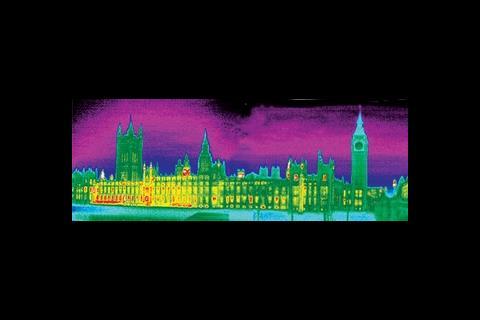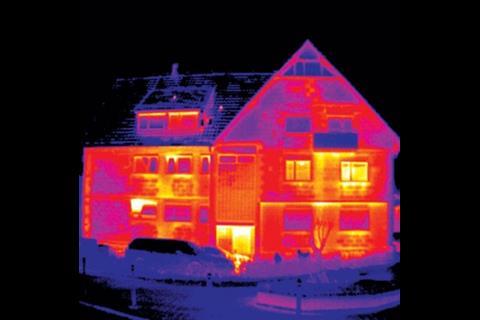ThatŌĆÖs what the energy secretary has dubbed the governmentŌĆÖs strategy for tackling the carbon emissions of existing housing stock. Tracy Edwards examines the key proposals
District heating schemes and finance for home owners who switch to renewables are being considered by the government to help achieve its goal of an 80% cut in overall UK carbon emissions by 2050.
The proposals are included in the Heat and Energy Saving Strategy consultation, launched by energy and climate change secretary Ed Miliband last month. He dubbed the comprehensive national plan ŌĆ£the Great British RefurbŌĆØ.
Its focus on existing housing stock makes a lot of sense: more than 70% of the houses now standing will still be in use in 2050, and domestic heating accounts for about a quarter of the UKŌĆÖs total CO2 emissions.
The government aims to supply cavity wall and loft insulation for all suitable properties by 2015. More ambitiously, by ¢ ¢ 2020 it plans to provide energy make-overs for 7 million homes, involving a range of energy efficient solutions.
Miliband said many of the proposed measures, such as the financial packages for home owners, could also help businesses, especially SMEs, and that the consultation would explore this.
Cost incentives designed to encourage households to install renewable technologies such as solar panels, ground source heat pumps and biomass boilers are under consideration. A levy on fossil fuel providers would help with up-front installation costs, while the remainder would be paid back through a percentage of the savings on energy bills. This would be linked to the property rather than residents.
Discussions will also focus on the structure and banding of a new Renewable Heat Incentive (RHI), which would provide subsidies for any supplier of renewable heat or renewable fuel used for heating. Unlike the electricity feed-in tariff, the RHI would be available at all scales, from households to large industrial facilities.
Self-monitoring methods will also be considered, including mandatory smart meters and low cost energy audits.
District heating schemes
The Heat and Energy Strategy has a strong community focus, and results of the consultation will play a vital role in plans for wide-scale district heating for both homes and businesses.
The draft plan examines measures aimed at tackling key barriers to district heating, by enhancing the role of local authorities and improving the supply chain. It focuses strongly on combined heat and power (CHP), which can improve energy efficiency by more than 30% compared with generating heat and electricity separately. The technology, which uses waste heat produced during the generation of electricity, provided more than 7% of UK electricity in 2008 and saved 10.2 MtCO2.
Representatives from the Department for Energy and Climate Change (DECC) were keen to point out that one advantage of introducing this form of district heating is that CHP can start out using fossil fuels and then switch to renewables such as biomass in the future.
The consultation is also examining ways in which waste and surplus heat from industrial processes can be used to a greater extent in CHP schemes.
CHP is already supported by a number of policies, such as exemption from the Climate Change Levy, and the Renewables Obligation, which requires electricity suppliers to source an annually increasing percentage of the electricity they supply from renewable sources. The new strategy will concentrate on ensuring that this range of price mechanisms provides sufficient support to CHP, and the consultation invites further proposals to improve the framework.
Miliband described the process as ŌĆ£a very open consultation, during which we are keen to hear from households, businesses and communities.ŌĆØ
Two years ago, the governmentŌĆÖs Business and Enterprise Committee claimed that low carbon heat production had been regarded as ŌĆ£the Cinderella of energy policyŌĆØ. With discussions on a host of new heat-focused initiatives well under way, along with plans to work with the construction industry to design a voluntary code of practice on low carbon heating and energies, it seems an invitation to the ball has been issued.
Summary of key proposals
- Facilitate the development and expansion of district heating.
- Ensure that current carbon pricing mechanisms provide sufficient support to CHP.
- Work with the construction industry to design a voluntary code of practice on energy efficiency and low carbon energy.
- Establish an accreditation scheme for installers.
- Introduce new financial packages to help homeowners with the up-front costs of renewables.
- Provide cavity wall and loft installation for all suitable properties by 2015.
- Guarantee all homes have access to ŌĆ£whole houseŌĆØ improvement by 2030.
- Train domestic energy assessors to provide a home energy advice service.
- Mandatory installation of smart meters in every home.
- Roll out low-cost energy audits.
Source
║├╔½Ž╚╔·TV Sustainable Design
Postscript
For more information, visit























No comments yet